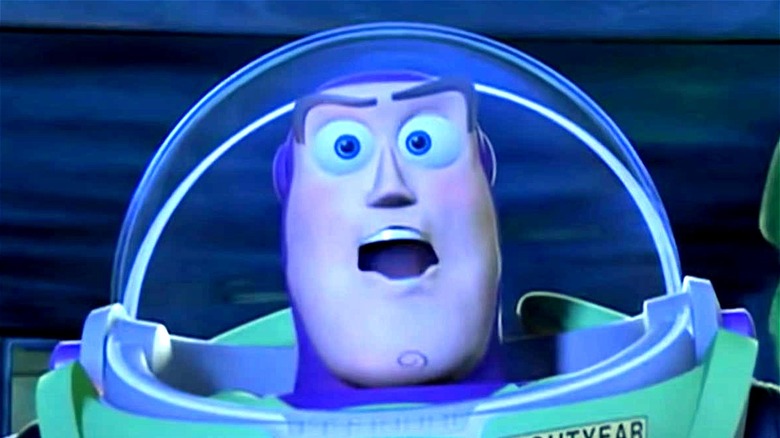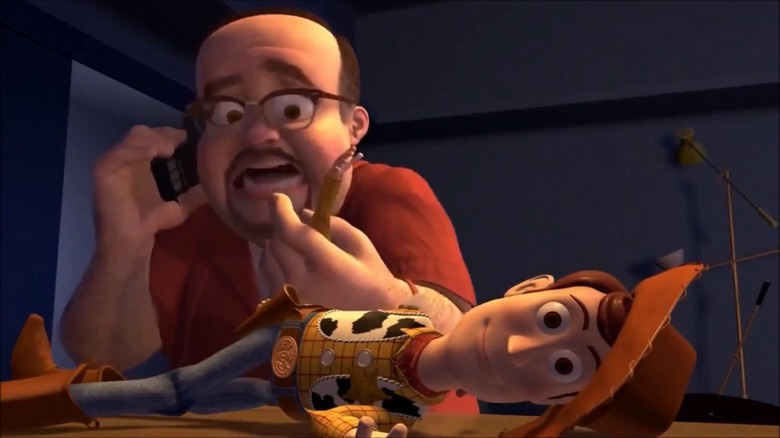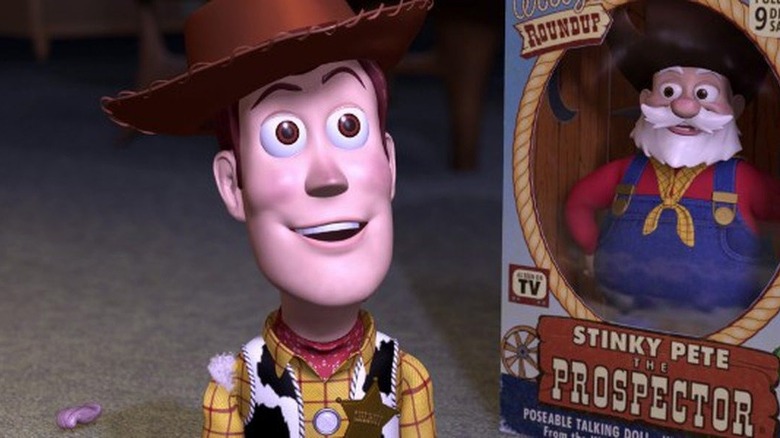The Real Reason Toy Story 2 Almost Never Happened
Released in the fall of 1995, expectations were undoubtedly tempered for "Toy Story." The film was, after all, the first feature-length offering to be fully computer-animated. Despite boasting the star power of Tom Hanks and Tim Allen, not to mention backing from Walt Disney Pictures, "Toy Story" was also just the first film from a then-unproven animation firm called Pixar Studios. Once it hit theaters, though, "Toy Story" became a legitimate cultural phenomenon, ranking among 1995's box office champs (per Box Office Mojo). And in the years since, it's remained one of the best-loved animated films ever produced.
Even despite the runaway success of "Toy Story," expectations were apparently much lower for its sequel. In fact, it was initially designated for a straight-to-DVD release before Disney and Pixar bosses opted to shuffle it into theaters (per Mental Floss). Upon its release in 1999, "Toy Story 2" proved every bit as beloved as its predecessor, with some fans of the franchise, now four films strong, hailing it as the best of the bunch (per Vox). But according to co-founder of Pixar Ed Catmull, the release of "Toy Story 2" almost never happened, and the film's fully-digital creative process nearly proved to be its undoing.
A near-tragic technical miscue almost erased Toy Story 2 from history
The Mental Floss piece cites Catmull's book "Creativity, Inc." for the story behind the near loss of "Toy Story 2." Published in 2014, the book was written by Amy Wallace and Catmull (the latter of whom served as long-time President of Walt Disney Animation after co-founding Pixar) and details the many behind-the-scenes struggles of bringing Pixar movies to life. One such struggle occurred well into production of "Toy Story 2," and it's a doozy: The bulk of the film was suddenly deleted from Pixar servers by an unnamed technician who inadvertently entered a coding cue to remove all the film's files.
Per the Mental Floss piece, Catmull paints a horrifying picture of the film's deletion every bit as dramatic as you might imagine, stating that the film's creative team watched helplessly as approximately 90% of the film disappeared before their very eyes. "First, Woody's hat disappeared. Then his boots. Then he disappeared entirely. Whole sequences — poof! — were deleted from the drive." To make matters worse, Catmull claims the film could not be restored, as Pixar's backup system had failed, and no one on site had a copy of the film saved anywhere else.
At best, such a disaster could have meant a lengthy production delay for "Toy Story 2." At worst, the film might've been permanently shelved.
A bit of luck saved Toy Story 2 from a potentially dark fate
Fortune was, however, in Pixar's favor, as the film's supervising technical director Galyn Susman had recently given birth. As such, she'd taken to working mostly from home, which, as Catmull details in "Creativity, Inc," entailed her taking a fresh copy of "Toy Story 2" home with her every week. Alerted to the disaster, Susman promptly brought her most recent copy of the film to Pixar headquarters, thus saving the day.
Regarding the copy of the film on Susman's computer, "Toy Story 2" technical director Oren Jacobs is quoted in Catmull's book as saying that the laptop itself was treated with the utmost care, "carried into Pixar like an Egyptian pharaoh." Some work was naturally lost in the unfortunate coding disaster. But what remained on Susman's hard drive ensured the "Toy Story 2" team wasn't starting from scratch when they got back to work — which is good, as Catmull claims re-assembling the film would've "taken thirty people a solid year."
As it stands, we can all thank Susman and her then-newborn child for not only saving "Toy Story 2" from immediate doom, but likely ensuring the world got to see the film at all. And one can only imagine that the nerve-shredding scene led to Pixar instituting all manner of new processes and procedures for backing up their work — including, of course, not entering potentially catastrophic lines of digital text unless you're absolutely certain you're doing it right.


